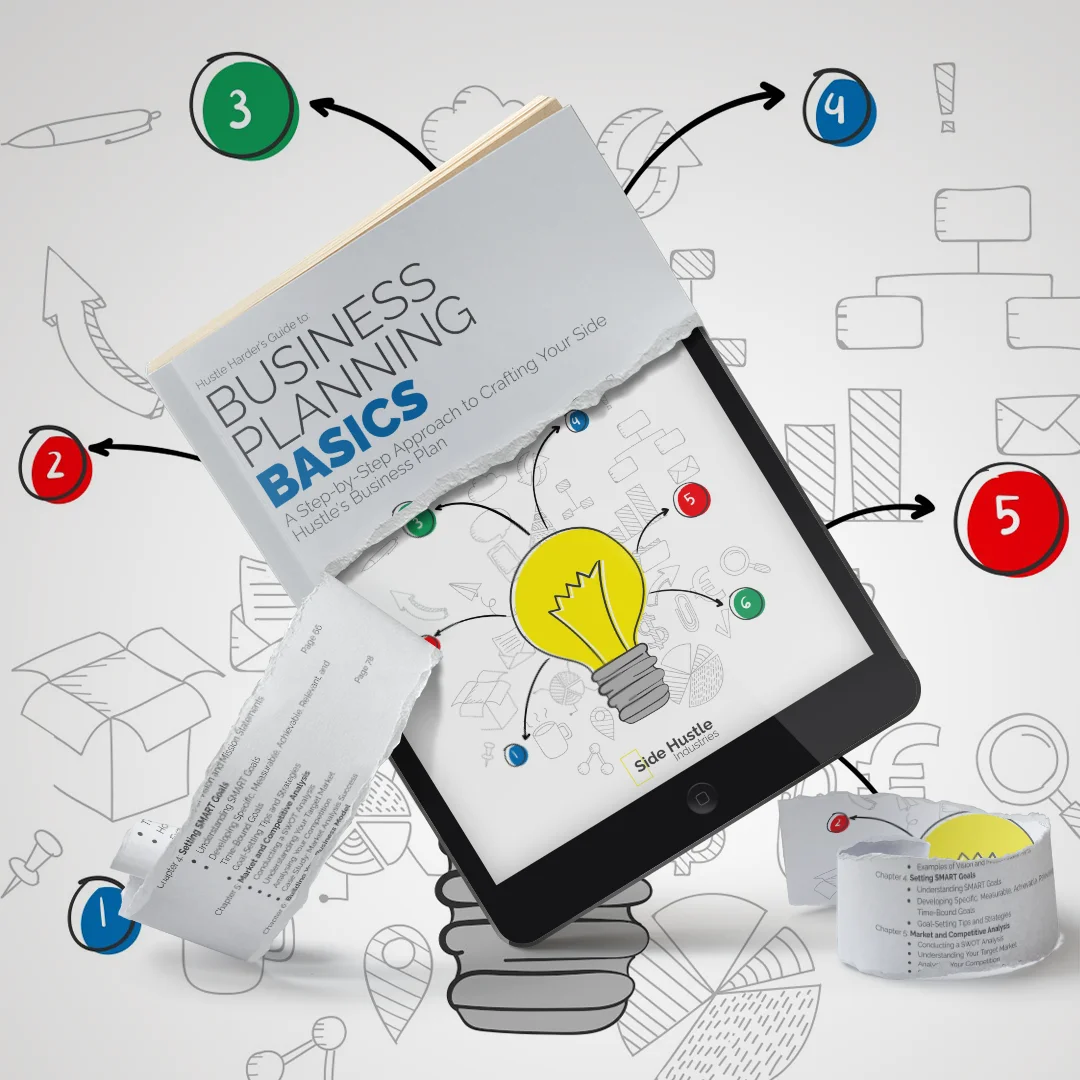
In today’s digital age, building a robust online presence is an absolute must for any side hustle. Your online presence not only serves as the face of your business but also acts as a powerful tool to reach, engage, and convert your target audience. In this blog, we’ll explore the critical aspects of building an online presence, from creating a user-friendly website to effectively using social media and content marketing.
The Importance of an Online Presence
Your online presence encompasses all the digital touchpoints where your business interacts with your audience. Here’s why it’s so crucial:
- Visibility: The vast majority of consumers turn to the internet to discover products and services. A strong online presence ensures that your side hustle is visible to potential customers.
- Credibility: A professional and well-maintained online presence enhances your credibility and trustworthiness. It shows that your business is legitimate and customer-focused.
- Accessibility: Your online presence makes your business accessible 24/7, allowing customers to engage with your side hustle at their convenience.
- Global Reach: With an online presence, your potential customer base expands beyond geographical boundaries, giving your side hustle the potential to reach a global audience.
- Marketing Efficiency: Online marketing can be more cost-effective than traditional advertising methods, making it an efficient way to promote your side hustle.
Now, let’s delve into the key components of building a strong online presence:

A User-Friendly Website
Your website is the central hub of your online presence. It’s where potential customers learn about your side hustle, explore your products or services, and, ideally, make purchases. Here’s how to create a user-friendly website:
- Clear Design: Opt for a clean and intuitive design that’s easy on the eyes. Use a professional colour scheme and typography that aligns with your brand.
- Mobile Responsiveness: Ensure your website is fully responsive to provide an excellent user experience on both desktop and mobile devices.
- Speed: Fast loading times are crucial. Use optimised images and consider content delivery networks (CDNs) to improve speed.
- Navigation: Implement a clear and straightforward navigation structure. Visitors should easily find the information they’re looking for.
- Contact Information: Make your contact details, including email, phone number, and physical address, readily accessible.
- Engaging Content: Create informative and engaging content that provides value to your visitors. Use high-quality images and videos.
- Security: Invest in SSL certificates to ensure a secure browsing experience. Address potential security concerns by regularly updating your website’s software.
- SEO Optimization: Optimise your website for search engines (SEO) to improve its visibility in search results.
- Analytics: Use website analytics tools to track visitor behaviour, conversion rates, and other crucial metrics.
Social Media Presence
Social media platforms are powerful tools for connecting with your audience and promoting your side hustle. Here’s how to make the most of your social media presence:
- Platform Selection: Choose the social media platforms that are most relevant to your target audience. Common choices include Facebook, Instagram, Twitter, LinkedIn, and Pinterest.
- Consistent Branding: Maintain consistent branding across all your social media profiles, using the same logo, colour scheme, and messaging.
- Engaging Content: Create and share content that resonates with your audience. This could include informative articles, eye-catching visuals, customer stories, and behind-the-scenes content.
- Regular Posting: Maintain a regular posting schedule to keep your audience engaged. Use social media management tools to schedule posts in advance.
- Engagement: Respond to comments, messages, and mentions promptly. Engage with your audience through polls, contests, and interactive posts.
- Advertising: Consider using paid social media advertising to expand your reach and target specific demographics.
Content Marketing
Content marketing involves creating valuable content that addresses your audience’s needs and interests. Here’s how to harness the power of content marketing for your online presence:
- Audience Research: Understand your audience’s pain points, questions, and interests. This research will guide your content creation.
- Variety of Content: Create diverse content, including blog posts, videos, infographics, podcasts, and more. Different formats appeal to different audience segments.
- Consistency: Maintain a regular publishing schedule to keep your audience engaged. Consistency builds trust and keeps your audience coming back for more.
- SEO Optimization: Optimise your content for search engines by using relevant keywords, meta descriptions, and other SEO best practices.
- Quality Over Quantity: Focus on creating high-quality content that provides genuine value to your audience. Quality content is more likely to be shared and appreciated.
- Analytics: Use analytics to track the performance of your content. Analyse which topics and formats resonate most with your audience.
Email Marketing
Email marketing is a highly effective tool for building and nurturing relationships with your audience. Here’s how to use email marketing to strengthen your online presence:
- Building a Subscriber List: Encourage website visitors to subscribe to your email list by offering incentives like exclusive content, discounts, or updates.
- Segmentation: Segment your email list to send targeted content and offers to specific audience groups based on demographics, behaviour, or preferences.
- Personalization: Personalise your emails with recipients’ names and tailored content. Personalization enhances engagement.
- Valuable Content: Provide valuable content in your emails, such as informative articles, special promotions, and news related to your side hustle.
- Automation: Use email marketing automation to schedule and send emails at the right times, such as welcome emails, product recommendations, or abandoned cart reminders.
- Analytics: Track email campaign performance to measure open rates, click-through rates, and conversion rates. Use this data to refine your email marketing strategy.
Search Engine Optimization (SEO)
Optimising your online content for search engines is vital for improving your website’s visibility. Here’s how to enhance your online presence through SEO:
- Keyword Research: Identify relevant keywords and phrases used by your target audience in online searches.
- On-Page SEO: Optimise your website’s pages by using keywords in your content, headings, and meta tags. Ensure your website is user-friendly and mobile-responsive.
- Quality Content: Develop high-quality, informative content that addresses your audience’s needs and questions. Valuable content is more likely to rank well in search results.
- Link Building: Build high-quality backlinks from reputable websites to your own. Quality backlinks can improve your site’s authority and search rankings.
Regular Updates: Continually update and improve your website content to stay relevant and competitive in search engine results.

Online Advertising
Online advertising, including Google Ads and social media advertising, allows you to reach a specific audience through paid placements. Here’s how to use online advertising effectively:
- Clear Goals: Define clear goals for your online advertising campaigns, whether it’s to increase website traffic, boost sales, or raise brand awareness.
- Budget Management: Set a budget for your advertising campaigns and closely monitor spending to ensure it aligns with your allocated budget.
- Targeted Audience: Utilise targeting options to reach the most relevant audience, whether it’s based on demographics, interests, location, or behaviour.
- Compelling Ad Content: Craft engaging ad copy and visuals that grab the audience’s attention and convey your message effectively.
- A/B Testing: Experiment with different ad creatives, headlines, and calls to action through A/B testing to discover what works best for your audience.
Reputation Management
Online reputation management involves monitoring and shaping how your side hustle is perceived on the internet. A positive online reputation is crucial for building trust and attracting customers. Here’s how to manage your online reputation effectively:
- Monitor Mentions: Use online tools to monitor mentions of your business across social media, review websites, and online forums.
- Respond Promptly: Address both positive and negative comments or reviews promptly and professionally. Engage in a constructive and helpful manner.
- Encourage Reviews: Encourage satisfied customers to leave positive reviews on platforms like Google My Business, Yelp, and industry-specific review sites.
- Transparency: Be transparent in your interactions with customers. If an issue arises, acknowledge it and provide a solution.
- Consistent Branding: Ensure that your branding is consistent across all online platforms, from your website to social media profiles and review sites.
Building a strong online presence is a multifaceted process that involves a combination of web design, social media engagement, content creation, email marketing, SEO, online advertising, and reputation management. Each of these elements contributes to your side hustle’s visibility, credibility, and ability to engage with your target audience. By focusing on these components and maintaining consistency, you’ll create a robust online presence that supports your business’s growth and success.

*Also available on Amazon in Kindle, Soft Cover & Hard Cover formats. —> Click Here.
